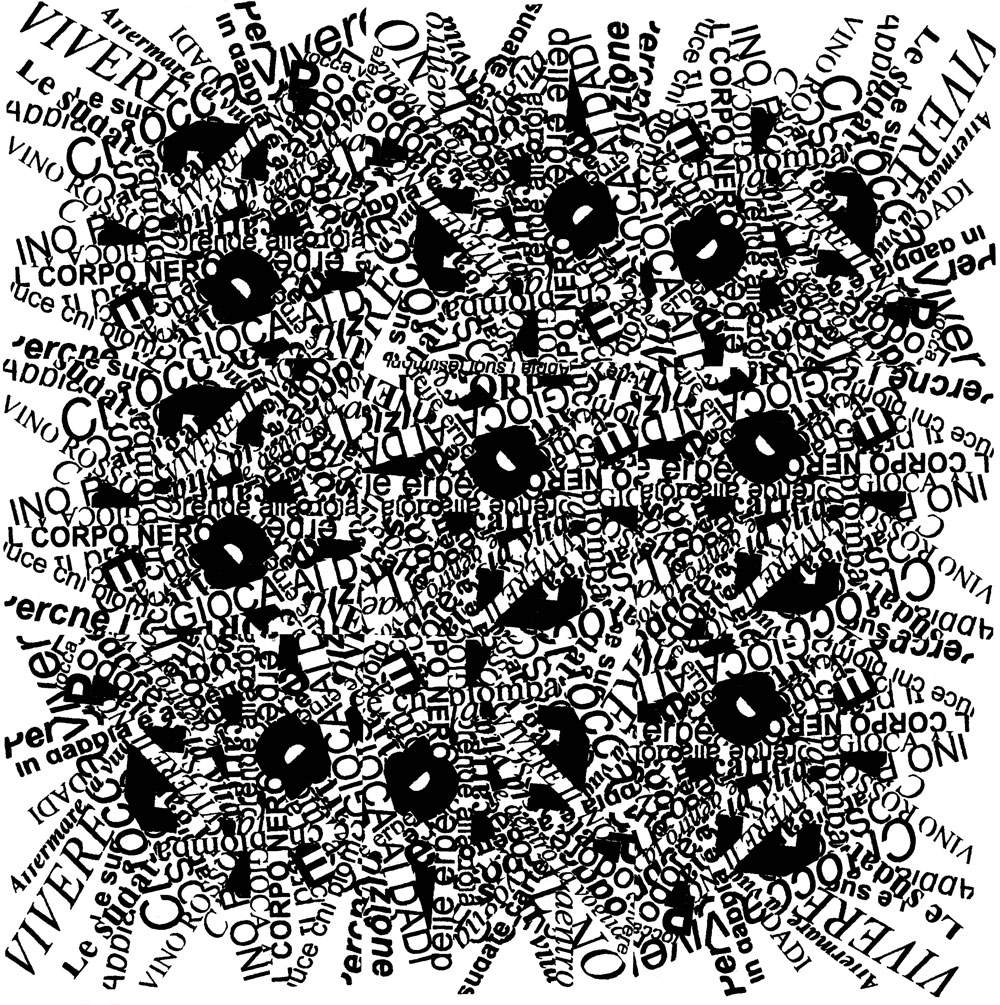Visionarea Art Space in Rome pays tribute to Nanni Balestrini, who passed away a few days ago
From May 29 to September 2, 2019, Visionarea Art Space in Rome will present the exhibition Vogliamo tutto by Nanni Balestrini, a great artist who passed away a few days ago.
Eleven of his works made between 1965 and 2004 will be exhibited: a selection made by the artist himself to narrate his creative production.
Balestrini’s works break the patterns of art, they are revolution, fragments of contemporaneity caught in specific moments.
The exhibition is curated by Luigi De Ambrogi in collaboration with the Emilio Mazzoli Gallery in Modena and supported by the Culture and Art Foundation, an instrumental entity of the Third Pillar Foundation-International.
"I am pleased to contribute today, with this exhibition, a final and fitting tribute to the figure and art of Nanni Balestrini, who unfortunately passed away just a few days ago. He was incontrovertibly one of the most important intellectuals of the period of the social contestations and political battles of the 1960s: a poet, writer, essayist and finally also an artist, he gave life to a varied cultural production, always experimental in tone and often politically committed. This exhibition, full of his collages but also significant works on canvas and panel, not coincidentally bears the title of his most famous novel, Vogliamo tutto (1971), which became the manifesto of an entire decade. Balestrini was, in my opinion, one of the most energetic and provocative “total artists” of the second half of the twentieth century, a cantor of an era that radically changed not only art, but also our society," commented the President of the Fondazione Terzo Pilastro.
Achille Bonito Oliva wrote of Nanni Balestrini’s art as follows: "Sculpture, it would be the becoming-body of places that, opening a quarter and guarding it, keep gathered around it a free that grants a dwelling to all things and to men a dwelling in the midst of things (Martin Heidegger).
Here is the philosophical emblem of Nanni Balestrini who identifies the possibility of founding a place of art not circumscribed to traditional genres, not anchored to the simple reference of poetry, painting, sculpture, drawing and pure architecture. In this case, the work is not the result of a linguistic trespass or entanglement, but rather the result of a foundation of a different aesthetic space, in which not only individual linguistic fragments count. A Wagnerian impulse has run through all the creative experiences of the historical avant-gardes, and even of some of the neo-avant-gardes after World War II, about the possibility of an art capable of totalizing within itself a range of languages that are different from each other and yet interwoven in a spectacular interaction. A desire for omnipotence runs through the creative process of art from the last decades of the nineteenth century to the experiences of our century. Language becomes the appropriate tool to propose a confrontation between art and life, understood as a field of complexity to which it is possible to contrast another complexity, that of the work itself, made up of the relationship between different languages.
Art erects a kind of aesthetic dam against the inertia of the existing, or at least constructs an internal boundary that can be walked in real space and time. If generally the artistic experience founds a metaphorical temporality and spatiality, indicating a circumnavigation of pure fantasy, the construction of a place woven around the use of various languages instead allows for a possibility of contemplative concreteness that replaces the relationship with the everyday, albeit momentarily. Somehow art becomes the possibility of pushing life toward a concrete impossibility of articulating itself as it is.
The work founds a circular boundary within which real relationships and displacement take place. Displacement concerns the psychosensory experience of the artist and the viewer moving within a shifting field of relationships, realized by the complex system of coded signs (words taken from newspapers) and recycled by the poet. The statute of complexity becomes a component that accompanies the construction of a work that does not want to challenge reality on the side of verisimilitude, but rather of antagonistic juxtaposition capable of creating astonishment and wonder. The historical avant-gardes and the more recent post-World War II avant-gardes have adopted this temptation as a possible attitude that introduces a further theme, that of the construction of the work. But to be a modern construction, it is necessary for the artist to introduce an inescapable relationship with technique. The technique of recycling acquires the task of founding a further production than the one he normally makes. In the work it takes on the role of a medium bent to a contemplative end and a possible record of a different relationship with the complexity of the world. The principle of a frontal communication with the work, resting simply on an exchange of a rational kind, is thus broken down, and instead a different commerce capable of quite different implications is proposed. On the other hand, there exists for contemporary art the problem of time, understood as acceleration and speed, which prevents the assumption of an impossible silent state of contemplation fixed simply in the zone of the mental gaze."
For info: www.visionarea.org
Image: Nanni Balestrini, Lesson in Physics (2002)
 |
| Visionarea Art Space in Rome pays tribute to Nanni Balestrini, who passed away a few days ago |
Warning: the translation into English of the original Italian article was created using automatic tools. We undertake to review all articles, but we do not guarantee the total absence of inaccuracies in the translation due to the program. You can find the original by clicking on the ITA button. If you find any mistake,please contact us.




























